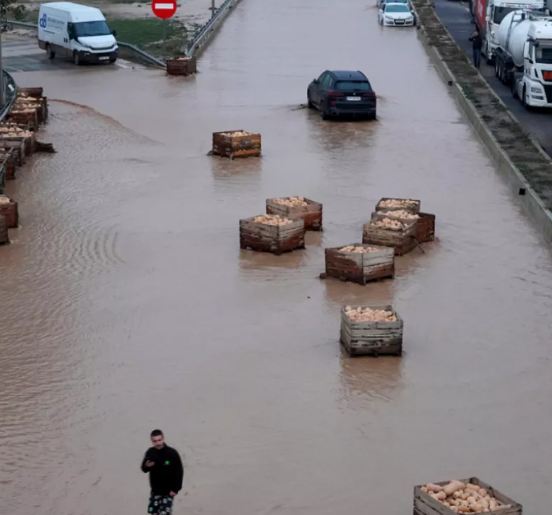Torrential Rains Bring Devastation and Tragedy to Valencia Spain
The devastating flash floods that struck Spain in late October 2024 have left an unprecedented toll on the country, particularly in the Valencia region, where record rainfall has led to the deadliest flooding seen in decades. As emergency crews continue to comb through the destruction, here’s an overview of the situation so far.

Key Details of the Floods
- Death Toll and Casualties: At least 205 people have lost their lives, with the majority of fatalities occurring in Valencia. Dozens are still missing, and the likelihood of finding survivors is diminishing.
- Extent of Flooding: The floods, which saw an entire year’s worth of rain fall within hours, inundated towns, destroyed infrastructure, and left thousands without power and clean water. The floodwaters submerged rural villages, washed out roads, and damaged highways, severely hindering rescue and recovery efforts.
- Emergency Response: Nearly 1,700 emergency workers, including 500 soldiers, have been mobilized to assist with search-and-rescue operations. Authorities are using helicopters to access areas that remain cut off due to road collapses.
- Impact on Local Communities: Residents and volunteers are tirelessly working to clean up and remove mud from homes and streets. In places like Paiporta, the floods left dozens of people dead, including six residents in a retirement home. Many have expressed frustration with the emergency alert system, claiming they received warnings too late.
Possible Causes
- Meteorological Phenomenon: Meteorologists point to a “gota fría” (cold drop), a weather pattern involving a mass of cold air at high altitudes, as the immediate cause of the intense rainfall. This phenomenon, often associated with heavy autumn rains, was exacerbated by unusually warm air and sea temperatures.
- Climate Change: Scientists from the World Weather Attribution initiative and Climate Central link the intensity of the rains to climate change. Rising global temperatures and warmer oceans increase the capacity for heavy rainfall events by creating conditions that allow storms to gather and release large volumes of water.

Comparison to Past Events
- Historical Context: The scale of this disaster has not been seen since the 1996 floods in the Pyrenees, which killed 87 people. Other floods in Spain’s history, such as the 1959 disaster in Ribadelago that killed 144, were caused by infrastructure failures rather than natural rainfall events.
What’s Next?
- Ongoing Threats: Red and orange alerts remain in place in parts of southern and eastern Spain, with continued rains expected. Authorities have urged residents to stay alert, as further flooding could worsen the situation.
- Government Support: Spanish Prime Minister Pedro Sánchez has pledged full support to the affected communities and declared three days of national mourning in memory of the victims.
This tragic event underscores the growing challenges of managing extreme weather events in a warming world. The unprecedented scale of the flood in Valencia may serve as a stark reminder of the need to improve disaster preparedness and emergency response systems as climate change continues to increase the frequency and intensity of such natural disasters.

